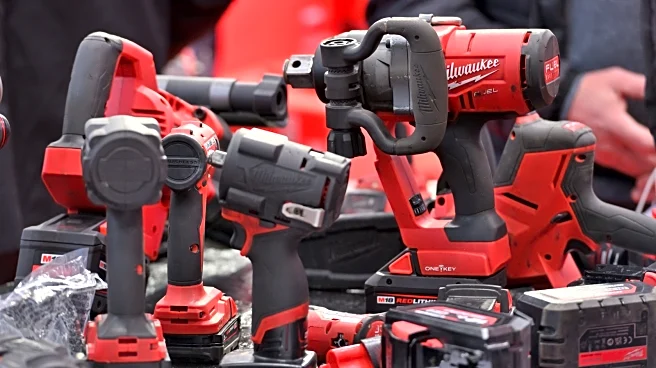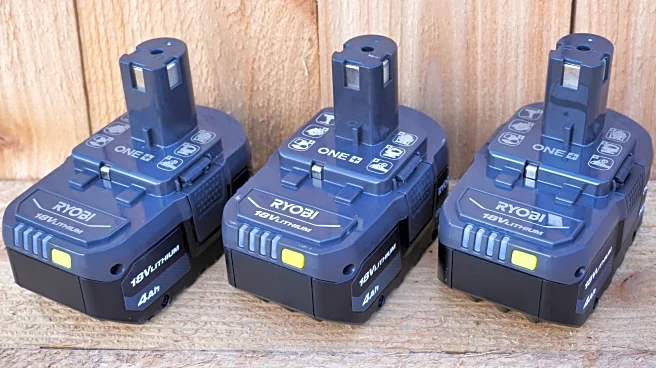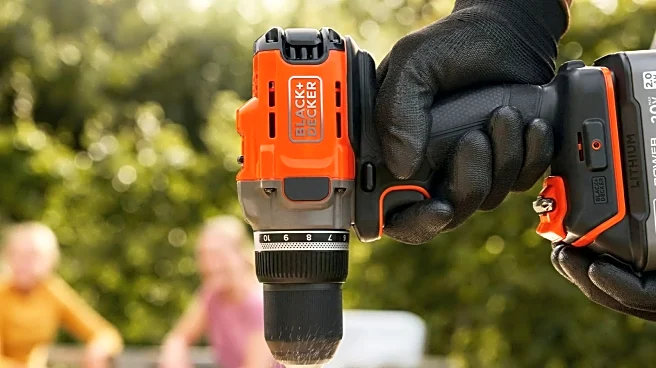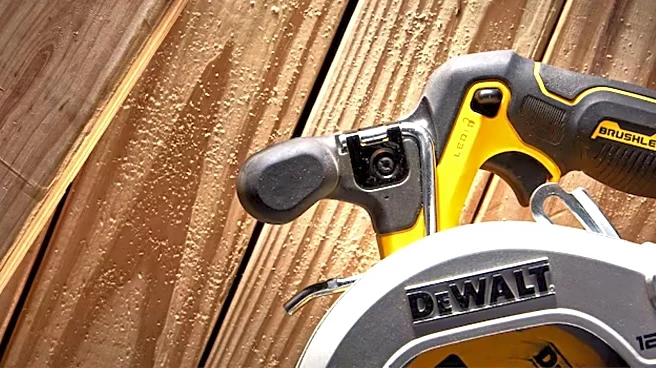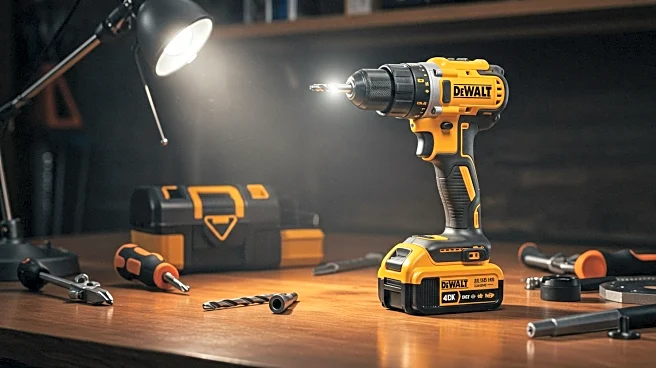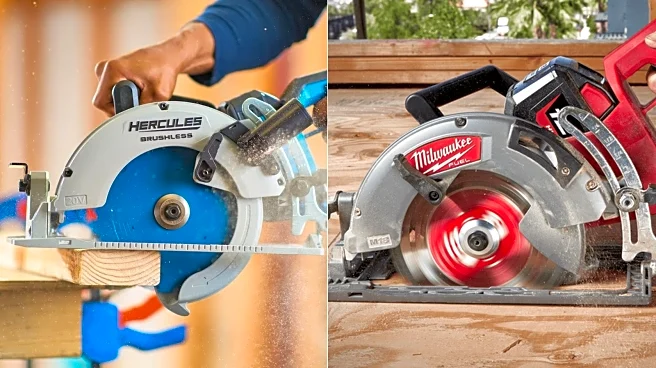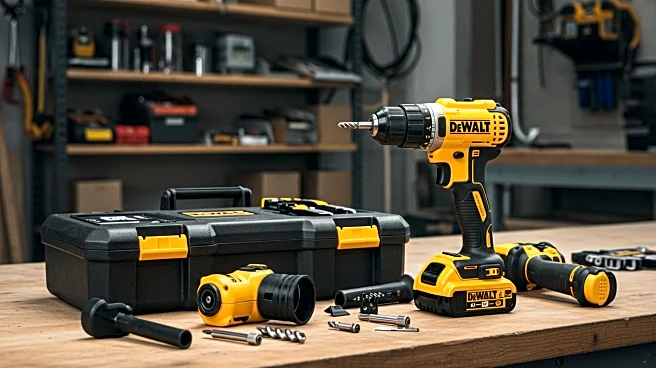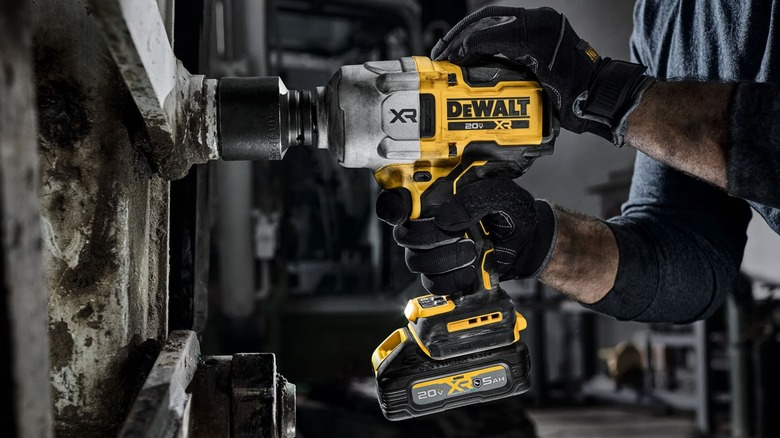
As one of the foremost brands in the power tool world, it's no surprise that DeWalt has a wide range of tools for customers to pull from. The brand continues to evolve, with there being several new DeWalt tools worth adding to your collection in 2025. To a casual user, though, some appear to serve the same purpose. While it may seem like DeWalt is double-dipping with some of its tools, this isn't entirely the case. Even those that look and operate the same are considered separate tools for a reason.
Fine examples of this are DeWalt's impact drivers and impact wrenches. At a surface level, they both operate the same, using rotational force to drive screws into various surfaces with power and speed. Where they differ is their power level, size, and the type of hardware you should use with each. In the case of an impact driver, which is comparatively smaller and less powerful, you're best served utilizing its 1/4-inch drive with much smaller screws. Meanwhile, impact wrenches are bigger, more powerful, and, therefore, intended to work with much larger hardware. Oftentimes, they come with a 3/8-inch drive and are used to move larger nuts and bolts.
That covers the main performance differences between impact drivers and wrenches. Naturally, different levels of performance mean that they're intended for different situations.
Read more: 6 Non-DeWalt Tools That Work With DeWalt Batteries
Use Cases For Impact Drivers And Impact Wrenches
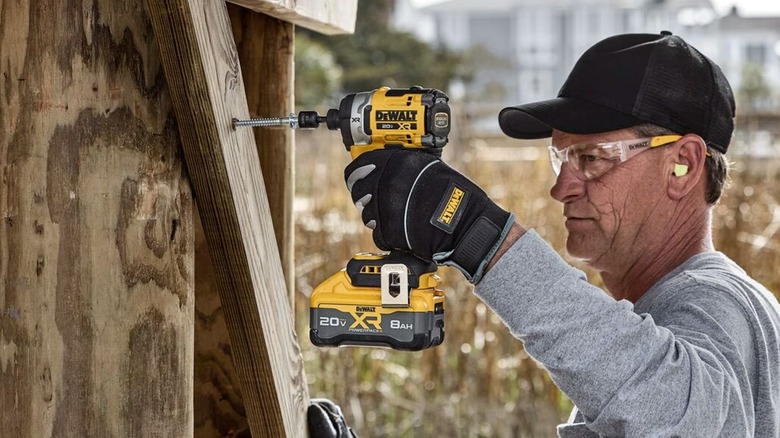
As two different tools, it only makes sense that impact drivers and impact wrenches from DeWalt and other tool brands come with their own unique sets of use cases. Starting with the driver, as mentioned, this is a tool that is best used with smaller hardware. Therefore, they're excellent for lighter yet repetitive jobs. Think of constructing a fence, removing several screws from walls, or putting together furniture. Their compact, lightweight design makes them a great tool for repeated use without wearing out your hands and wrists over time. DeWalt even ranks among the best of the major impact driver brands to boot.
Meanwhile, the uses of an impact wrench are a bit less casual. As a larger, more powerful tool, the impact wrench is going to work with larger, heavier-duty hardware than the impact driver. They're good for mechanical work where big nuts and bolts need to be moved with great power, construction where long, large screws are needed, and metal construction where additional torque is needed to put long threaded screws in their place. There are also different kinds of impact wrenches to consider, including cordless, electric, and pneumatic, which require a compressor to operate.
Can Impact Drivers And Impact Wrenches Be Used Interchangeably?
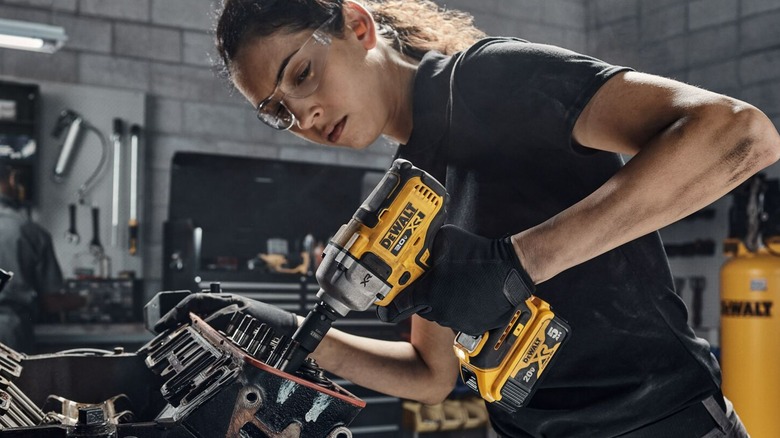
It might seem like DeWalt's impact drivers and impact wrenches can be used interchangeably if only one or the other is available. However, that's not entirely true. Drivers lack the torque of wrenches, and pushing them beyond their limits could lead to internal damage. There's also the concern surrounding the adapters needed to put wrench sockets onto a driver, as they present weak points that can break while under high stress on the job.
As for using an impact wrench as an impact driver, this isn't the greatest idea either. Theoretically, it could be used to drill in regular screws, but things could go awry in a hurry. With so much added force, it could damage the material you're drilling into. Removing a stuck screw with an impact wrench too quickly could break the screw, and without adjusting the torque level accordingly, you could rip the head right off, leaving the remainder of it stuck without a way to easily remove it. It is possible to remove broken bolts with and without drilling, but avoiding the hassle in the first place is ideal.
As similar as they may seem, DeWalt's impact drivers and impact wrenches aren't necessarily interchangeable. For the sake of safety and the condition of your tools, it's best to be aware of when each should be used and the jobs they can each realistically handle.
Want the latest in tech and auto trends? Subscribe to our free newsletter for the latest headlines, expert guides, and how-to tips, one email at a time.
Read the original article on SlashGear.
